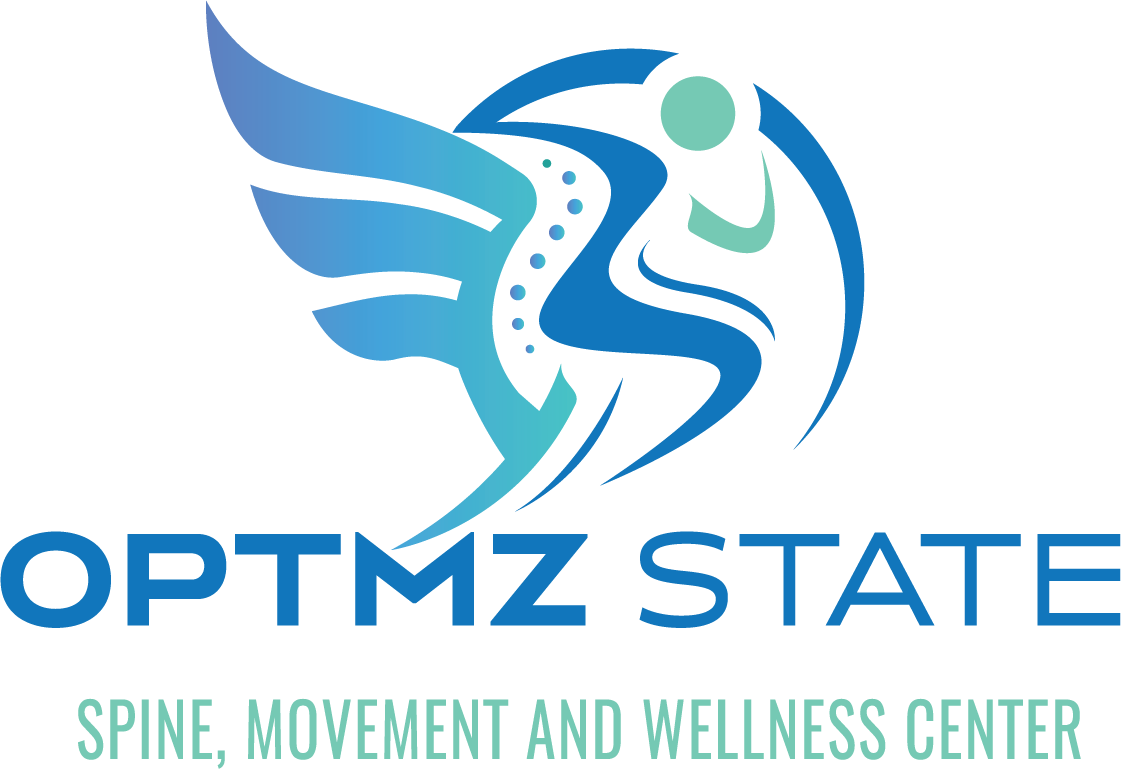If you're struggling with chronic back pain, it's time to reflect on a holistic approach that goes beyond temporary relief. By exploring methods like yoga, mindfulness, and nutritional changes, you might find a path that not only alleviates your discomfort but also enhances your overall wellbeing. Understanding the mind-body connection can offer deeper insights into how your lifestyle impacts pain. Curious about how these practices work together to transform your experience?
Understanding Chronic Back Pain
Chronic back pain affects about 20% of adults at some point in their lives, and understanding its intricacies is essential for effective management. You might experience this pain as a dull ache, sharp discomfort, or a feeling of tightness in your back. It can stem from various causes, including injuries, poor posture, or underlying medical conditions. Knowing what's triggering your pain is the first step toward relief.
It's important to recognize that chronic back pain isn't just about the physical sensations. It often influences your daily activities, sleep patterns, and even your mood. You may find yourself hesitating to engage in activities you once enjoyed, which can lead to feelings of frustration or helplessness.
When it comes to understanding your pain, consider the role of lifestyle factors. Sedentary habits can weaken your core muscles, contributing to back strain. Incorporating regular exercise, stretching, and strengthening routines can greatly improve your condition.
Additionally, maintaining proper ergonomics at your workspace can help reduce stress on your back.
Don't overlook the importance of regular check-ups with healthcare professionals. They can provide you with tailored advice and treatment options based on your specific situation. Whether it's physical therapy, medication, or other interventions, a thorough approach can help you manage your pain effectively.
The Mind-Body Connection
Your emotional state plays a significant role in how you experience pain, often amplifying discomfort.
Stress can lead to muscle tension, creating a cycle that's tough to break.
Emotional Impact on Pain
Pain isn't just a physical sensation; it's deeply intertwined with emotions and mental state. When you experience chronic back pain, it can amplify feelings like anxiety, frustration, or even sadness.
Your emotional response to pain may create a feedback loop, where stress intensifies your discomfort, making it harder to cope. You might notice that on days when you're feeling down or stressed, your back pain feels worse.
It's crucial to recognize that your mind and body communicate constantly. Emotional distress can lead to heightened awareness of pain, making it feel more pronounced.
Understanding this connection allows you to take proactive steps. By addressing underlying emotional issues, you can potentially lessen your perception of pain.
Mindfulness practices, such as meditation or deep-breathing exercises, can help you stay grounded and reduce anxiety. Engaging in activities that bring you joy can also shift your focus away from pain, improving your overall mood.
Stress and Muscle Tension
In moments of stress, the body often responds with increased muscle tension, particularly in the back and shoulders. You might notice that as stress levels rise, your muscles tighten, leading to discomfort and pain. This connection between stress and muscle tension is essential to understand if you want to manage chronic back pain effectively.
When you experience stress, your body goes into a fight-or-flight mode, releasing hormones that prepare you to react. Unfortunately, this response can cause your muscles to contract and remain tense. Over time, this prolonged tension can lead to chronic pain in your back.
You may find yourself clenching your jaw or hunching your shoulders without even realizing it, worsening your discomfort.
To alleviate this tension, it's important to incorporate stress-reduction techniques into your routine. Practices like deep breathing, mindfulness, or gentle stretching can help release the grip of stress on your muscles.
Visualization and Healing Techniques
Visualization techniques can be powerful tools in managing chronic back pain by harnessing the mind-body connection. When you engage in visualization, you create mental images that can help reduce pain and promote healing.
Picture a serene location where you feel completely at ease—this might be a quiet beach or a lush forest. As you immerse yourself in this imagery, notice how your body responds. You may feel tension release and pain diminish as your mind relaxes.
You can also visualize your pain as a physical object. Imagine it changing form or slowly dissolving. This process can help you gain control over your discomfort.
Additionally, combine visualization with deep breathing. Inhale deeply while picturing healing energy flowing into your body, and exhale any pain or tension.
Practicing these techniques regularly can enhance your resilience against chronic back pain. They encourage a sense of empowerment and can complement other holistic treatments.
Benefits of Holistic Approaches
When you embrace holistic approaches, you tap into the powerful mind-body connection that can enhance your overall well-being.
These methods offer natural pain relief and focus on personalized treatment plans tailored just for you.
Mind-Body Connection
Understanding the mind-body connection can greatly enhance your approach to managing chronic back pain. When you realize that your mental and emotional states influence your physical well-being, you open the door to new healing possibilities. Stress, anxiety, and negative emotions can amplify your pain perception. By addressing these factors, you can create a more holistic approach to pain management.
Practicing mindfulness and relaxation techniques, like meditation or deep breathing, can help calm your mind and reduce tension in your body. When you consciously shift your focus away from pain, you might discover that your discomfort lessens. Engaging in activities that promote positive emotions—like spending time in nature or with loved ones—can also play a vital role in your healing journey.
Additionally, understanding your body's signals can empower you to make better choices regarding movement and rest. Listening to your body allows you to identify patterns and triggers related to your pain. This awareness can lead to more effective coping strategies, ultimately improving your overall quality of life.
Natural Pain Relief
Exploring natural pain relief methods can greatly enhance your journey toward managing chronic back pain. These holistic approaches focus on treating the root causes of your discomfort rather than just masking the symptoms.
You might find that practices like acupuncture, chiropractic adjustments, or massage therapy provide significant relief by promoting blood flow and reducing tension in your muscles.
Incorporating herbal remedies, such as turmeric or ginger, can also offer anti-inflammatory benefits, helping to alleviate pain naturally.
Additionally, mindfulness techniques, including meditation and yoga, not only help you manage stress but also improve your body's flexibility and strength, which can lead to a decrease in pain over time.
Engaging in regular exercise, tailored to your capabilities, can strengthen your back and core muscles, giving you more support and reducing the likelihood of future pain episodes.
Moreover, maintaining a balanced diet rich in nutrients can enhance your overall well-being.
Ultimately, these natural pain relief methods empower you to take control of your health. By exploring and integrating these holistic practices into your routine, you can create a healthier, more sustainable approach to managing chronic back pain.
Personalized Treatment Plans
Personalized treatment plans can considerably enhance your journey toward managing chronic back pain by addressing your unique needs and circumstances. Unlike one-size-fits-all approaches, these plans take into account your specific pain triggers, lifestyle, and overall health, ensuring a more effective strategy for relief.
When you work with a holistic practitioner, you'll undergo a thorough assessment that may include physical exams, lifestyle evaluations, and discussions about your emotional well-being. This extensive understanding allows your practitioner to tailor a combination of therapies, such as acupuncture, nutritional adjustments, and mindfulness practices, to suit you best.
Moreover, personalized treatment plans empower you to actively participate in your healing process. You'll learn about techniques that resonate with you, fostering a sense of control over your pain management. Regular check-ins with your practitioner will help you adjust your plan as needed, ensuring that it evolves alongside your progress.
Ultimately, the goal is to create a well-rounded approach that not only alleviates pain but also promotes overall wellness. By embracing personalized treatment plans, you're taking significant steps toward reclaiming your life from chronic back pain.
Mindfulness and Meditation Techniques
Amid the chaos of daily life, mindfulness and meditation techniques can offer a powerful antidote to chronic back pain. By incorporating these practices into your routine, you can cultivate a deeper awareness of your body and mind. This heightened awareness allows you to recognize the tension in your back, helping you to release it more effectively.
Start by setting aside a few minutes each day for mindfulness meditation. Find a quiet space where you can sit comfortably. Close your eyes, take a few deep breaths, and focus on your breath as it flows in and out. If your mind starts to wander, gently guide it back to your breathing. This practice can help you develop a greater sense of control over your thoughts and feelings, ultimately reducing the perception of pain.
Another effective technique is body scan meditation. Lie down comfortably and bring your attention to each part of your body, starting from your toes and moving up to your head. As you focus on each area, notice any sensations or tension. Acknowledge these feelings without judgment, then consciously relax those areas. This practice not only promotes relaxation but also helps you to connect with your body, fostering a sense of acceptance.
Lastly, try mindful walking. As you walk, pay attention to the sensations in your back and legs. Embrace the rhythm of your steps, and let go of any distracting thoughts.
Yoga for Pain Relief
Yoga offers a powerful approach to managing chronic back pain by promoting flexibility and strength.
You'll discover effective poses that target pain relief while enhancing your mind-body connection.
Through regular practice, you can reveal lasting benefits that contribute to your overall well-being.
Benefits of Yoga
Chronic back pain can feel like a heavy weight on your shoulders, but incorporating yoga into your routine might lighten that load. Practicing yoga offers a multitude of benefits that can help alleviate discomfort and promote overall well-being.
First, yoga enhances flexibility, which is vital for maintaining a healthy spine and reducing tension in your muscles. When you stretch and strengthen your back, you're less likely to experience stiffness and pain.
Additionally, yoga encourages mindfulness and relaxation, helping to reduce stress that often exacerbates pain. By focusing on your breath and movements, you create a sense of calm that can help ease your mental burden. This mindfulness can lead to better pain management and a more positive outlook on your condition.
Moreover, yoga can improve your posture, which is essential for back health. Poor posture contributes to chronic pain, and by practicing yoga, you can develop body awareness that fosters better alignment in your daily activities.
In essence, yoga isn't just a physical practice; it's a holistic approach to managing chronic back pain. By incorporating it into your life, you're taking a proactive step toward relief and improved quality of life.
Effective Poses Explained
Relief from back pain often starts with the right poses that target key muscle groups and promote better alignment. One effective pose is the Cat-Cow stretch.
Begin on your hands and knees, arch your back while inhaling (Cat), and then drop your belly, lifting your head and tailbone as you exhale (Cow). This flow warms up your spine and enhances flexibility.
Next, try the Child's Pose. Kneel on the floor, sit back on your heels, and stretch your arms forward on the ground. This pose gently stretches your lower back and encourages relaxation.
The Downward-Facing Dog is another great option. From a plank position, lift your hips, creating an inverted V-shape. This pose stretches your back, hamstrings, and calves while promoting blood circulation.
Lastly, incorporate the Sphinx Pose. Lie on your stomach, prop yourself up on your forearms, and lift your chest. This gentle backbend strengthens your spine and alleviates tension in your lower back.
Mind-Body Connection
Understanding the mind-body connection can greatly enhance your experience with yoga for pain relief. When you practice yoga, you're not just stretching your body; you're also tuning in to your thoughts and emotions. This awareness can help you identify the mental patterns that contribute to your chronic back pain.
As you move through different poses, focus on your breath. Deep, controlled breathing not only calms your mind but also encourages relaxation in tense muscles. This combination helps release physical and emotional stress that may be manifesting as pain.
Incorporating mindfulness into your practice allows you to stay present. When you're fully engaged in each pose, you create a space to observe sensations in your body without judgment. This can shift your perspective and empower you to manage discomfort more effectively.
Additionally, consider integrating visualization techniques. Picture your spine aligning and healing as you flow through each movement. This mental imagery can amplify the physical benefits of your practice.
Acupuncture and Its Benefits
For centuries, people have turned to acupuncture as a holistic approach to managing back pain. This ancient practice, rooted in Traditional Chinese Medicine, involves inserting thin needles into specific points on your body to restore balance and promote healing. If you're struggling with chronic back pain, acupuncture could be a valuable tool in your pain management arsenal.
The benefits of acupuncture extend beyond just pain relief. Many individuals report improved mobility and decreased muscle tension after sessions. It's believed that acupuncture stimulates the release of endorphins, the body's natural painkillers, which can help reduce discomfort and enhance your overall sense of well-being.
Moreover, acupuncture can address underlying issues contributing to your back pain, such as stress and anxiety. By promoting relaxation and reducing tension, it creates a more favorable environment for healing. You might find that your sleep improves, allowing your body to recover more effectively.
Scheduling regular acupuncture sessions can also help you develop a deeper understanding of your body's needs. Practitioners often provide valuable insights about posture, movement, and lifestyle changes that can further support your healing journey.
If you're considering acupuncture, seek out a licensed practitioner who can tailor treatments to your specific needs. Remember, managing chronic back pain often requires a multifaceted approach, and acupuncture might just be the holistic solution you've been searching for.
Embrace this ancient practice and discover how it can enhance your quality of life.
Nutritional Support for Healing
When it comes to healing chronic back pain, nutritional support plays an essential role in your recovery journey. The foods you consume can either help or hinder your healing process. By focusing on a balanced diet rich in anti-inflammatory nutrients, you can greatly improve your chances of alleviating pain and promoting overall well-being.
Start by incorporating the following foods into your daily meals:
- Leafy Greens: Spinach, kale, and collard greens are packed with antioxidants and vitamins that reduce inflammation.
- Fatty Fish: Salmon, mackerel, and sardines are high in omega-3 fatty acids, which can help decrease joint pain and stiffness.
- Nuts and Seeds: Almonds, walnuts, and flaxseeds provide healthy fats and protein that support muscle repair and recovery.
- Fruits: Berries, oranges, and cherries are rich in antioxidants, which can combat oxidative stress and inflammation.
- Whole Grains: Brown rice, quinoa, and oats offer fiber and essential nutrients that support digestive health and overall vitality.
In addition to these foods, staying hydrated is essential for maintaining elasticity in your muscles and tissues. Aim for at least eight glasses of water a day.
You should also consider reducing processed foods, sugars, and unhealthy fats, as they can exacerbate inflammation and pain.
Chiropractic Care Explained
Chiropractic care offers a hands-on approach to managing chronic back pain, focusing on the alignment of the spine and overall musculoskeletal health. This method is rooted in the belief that proper alignment can alleviate pain, enhance mobility, and promote overall wellness.
When you visit a chiropractor, they'll assess your posture, spinal alignment, and movement patterns to identify issues contributing to your discomfort.
During your sessions, you'll likely receive spinal adjustments that involve specific, controlled movements to realign misaligned vertebrae. These adjustments can relieve pressure on nerves, improve circulation, and encourage your body's natural healing processes. You might be surprised at how effective these techniques can be for reducing pain and restoring function.
Chiropractors may also incorporate other therapies into your treatment plan, such as massage, ultrasound, or electrical stimulation. These complementary modalities can help ease muscle tension, improve flexibility, and enhance the effectiveness of your adjustments.
Additionally, chiropractors often provide guidance on exercises and stretches to support your recovery and prevent future issues.
As you engage in chiropractic care, it's crucial to communicate openly with your chiropractor about your pain levels and any changes you notice. This ongoing dialogue guarantees your treatment plan is tailored to your unique needs and can evolve as you progress.
Essential Lifestyle Changes
Making essential lifestyle changes can greatly impact your journey toward managing chronic back pain. By adopting a holistic approach, you can empower yourself to alleviate discomfort and improve your overall well-being. Here are some key adjustments you can make in your daily life:
- Stay Active: Engage in regular low-impact exercises, like walking or swimming, to strengthen your back muscles and improve flexibility.
- Maintain Proper Posture: Be mindful of how you sit, stand, and lift objects. Proper alignment can reduce strain on your back.
- Manage Weight: Maintaining a healthy weight can lessen the pressure on your spine. Focus on a balanced diet rich in fruits, vegetables, and whole grains.
- Prioritize Sleep: Confirm you're getting enough restorative sleep. A supportive mattress and sleeping position can make a significant difference in your back pain.
- Practice Stress Management: Stress can exacerbate pain. Incorporate relaxation techniques like meditation, deep breathing, or yoga into your routine to help manage stress levels.
Implementing these changes isn't just about physical adjustments; it's about transforming your entire lifestyle to better support your back health.
Remember, consistency is key. It may take time to notice improvements, but with dedication, you'll find that these lifestyle changes can lead to significant relief from chronic back pain.
Embrace this journey, and take proactive steps toward a healthier, pain-free life.
Building a Supportive Community
A supportive community can play an essential role in your journey to manage chronic back pain. Surrounding yourself with understanding and compassionate individuals can make a significant difference in how you cope with your pain. Whether it's friends, family, or a specialized support group, these connections provide emotional and practical support that can boost your morale and motivation.
Joining a support group can be particularly beneficial. Here, you'll find people who truly understand what you're going through, and sharing experiences can help alleviate feelings of isolation. Listening to others' stories and strategies can inspire you to explore new ways to manage your pain.
Plus, having a safe space to express your frustrations and fears can be incredibly cathartic.
In addition to emotional support, your community can help you stay accountable. Whether it's encouraging you to stick to exercise routines, reminding you to practice mindfulness, or participating in holistic activities with you, they can motivate you to make positive changes in your lifestyle.
Don't underestimate the power of social connections. Even simple activities, like going for a walk with a friend or attending a yoga class together, can foster a sense of belonging and normalcy.
Conclusion
Incorporating holistic solutions into your routine can considerably improve your experience with chronic back pain. By embracing the mind-body connection through practices like yoga and mindfulness, and supporting your body with anti-inflammatory nutrition, you're empowering yourself to manage pain more effectively. Don't forget the importance of lifestyle changes and community support; they can play a crucial role in your healing journey. Take these steps, and you'll enhance not only your pain management but your overall quality of life.



